Nikon AF-S 200-400mm f/4 G ED VR
This top end lens from Nikon is another that looks like it requires a pilot’s licence to operate it! Bristling with knobs, buttons and switches, it takes a long study just to see them all. But are they of any use? We take a look.
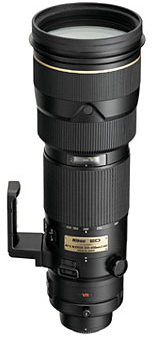 Specifications
Specifications
- Focal Length 200-400mm
- Max aperture f/4
- Min aperture f/32
- Closest focus 2m
- Construction 24/17 elements/groups
- Filter 52mm drop in
- Dimensions 124x358mm
- Weight 3.2kg
- Hood HB-30 (supplied)
- Price (SRP) £5499
Build and handling
You can hardly call the well-designed, padded container that this lens is supplied in a pouch. It is more of a full carrying bag! It sports a carry handle and a shoulder strap as well as a couple of net pockets on the sides. The interior is designed to cosset the lens. And this lens is not small! With a constant aperture of f/4 throughout the focal range, the optical engineering that has gone into the design is awesome! However, it has not resulted in a featherweight by any stretch of the imagination. At 3.2kg, you need a fairly good reason for lugging this weapon around.
With all of the latest technologies built in, including a silent wave motor (SWM) and vibration reduction (VR) as well as a ‘Memory set’ function and a construction that uses 24 individual glass elements in 17 groups including no less than four ED (extra dispersion) elements, there is good reason for the weight. The construction, as you might expect from a lens in this class, is first rate with very little to pull up.
Going from the mount, first you get a 52mm drop in filter with a switch panel to the left of this containing two slide switches for the memory recall, one an on/off and the second an on/off for the focus beep facility. Next up is the tripod mount collar with a nice sized release knob, markings for portrait and landscape orientation and a pair of lugs for the carrying strap.
Again forward of this, on the left side of the lens, is what can only be described as the control panel. Containing four two-position slide switches they control, from top to bottom, AF/MF, focus limit (full/6m+), VR on/off, and VR mode (normal/active). Next up is the zoom ring which, at nearly 80mm wide with a clean ribbed pattern, is a joy to use. The last item before the barrel takes a jump in diameter is the distance window, a simple one marked in metres and feet.
Some 20mm larger in diameter is the manual focus ring, again nicely ribbed and torqued. It does not rotate during autofocus but a finger touch can override the AF without switching. There is another slight increase in the overall size, indented at the four compass points with memory buttons before you reach the front element. This is surrounded by the mount for the carbon fibre hood (HB-30) that is a bayonet fit with a screw-in knob to ensure it stays put!
The tripod mount is Nikon’s interchangeable type and comes with a twin position foot that balances well with either lightweight or professional cameras.
In use, although this lens can be hand held for short periods, especially when employing the VR function, it is not possible to hold it up for long without some form of support. The VR is claimed to give an advantage of three stops and in use certainly helped to get sharp pictures at low shutter speeds. The system will also detect automatically when the camera/lens is being panned.
The AF-S is lightning fast and extremely accurate but, as has been noted before, has a tendency to be too fast for lesser cameras like the D50/70s and really requires one of the pro spec D2X/H or the D200 to get the best from it.
Optical Quality
As mentioned earlier, the optical engineering of this lens is something else! The performance is in the same league. It is razor sharp from the widest aperture throughout the focal range. As the zoom ratio is only 2:1, there are very few compromises that have had to be made and this shows dividends in the end results. Even with the sophisticated computer analysis of files that we use, things like distortion, chromatic aberration and vignetting were virtually immeasurable. Contrast is rendered superbly and nobody who uses this lens will be disappointed with the results that it produces.
Exceptionally for a zoom lens, it is sharpest when wide open and there is virtually no degradation of the picture quality as the focal length increases. As might be expected, the OOF highlights proved most pleasing. (OK, the ‘bokeh’ was very good!) Overall optically, this has to be one of the best lenses on the market!
 Handheld at 400mm and taken at 1/13sec and f/4 with ISO1600 set on a D200 shows what this lens is capable of. The shot would have been virtually impossible with 99% of other combinations. | 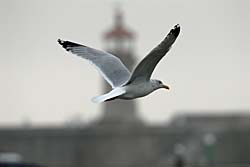 This shot shows in a small way the focussing capabilities of the lens. Shot at f/5.6 and 1/1000 at ISO400 on the D200 it held focus on this fast moving Gull despite a distracting background. |
 1/350sec and f/4 were used for this full frame shot. You can see a crop from this frame posted here. Nikon D200 at ISO400 |  Despite the distracting background these Turnstones on a harbour wall are still well separated from the background. D200 at ISO400. Lens set to 240mm and f/4. 1/200sec handheld. |
Click on each comparision photo below to view full size versions
Below is our lens test data. To find out how to use these graphs look at this article: How we test lenses
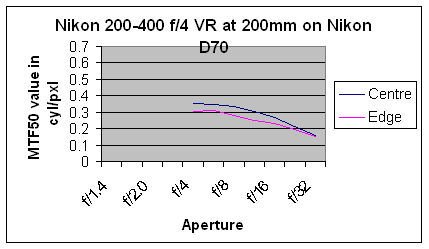
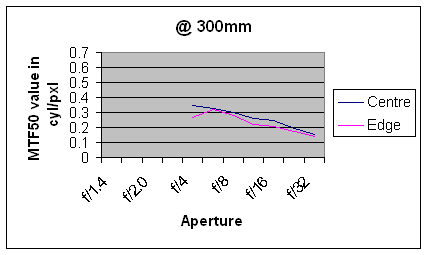
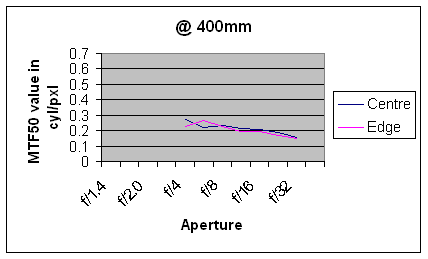
Verdict
This lens is heavy and expensive! Having said that, it is superbly engineered, both mechanically and optically and puts most primes in its focal range in the shade. The autofocus is so quick (on the right camera) that it will not only track, but catch up with things like fast birds flying directly towards you. If you can warrant the outlay, you will not be disappointed, whoever you are.
In summary, the positive points of the Nikon AF-S 200-400mm f/4 G ED VR are:
![]() Superb optical quality
Superb optical quality
![]() Excellent build quality
Excellent build quality
![]() Very rapid AF with good over-ride facility
Very rapid AF with good over-ride facility
![]() Helpful vibration reduction.
Helpful vibration reduction.
The negative points are:
![]() Weight
Weight
![]() Price
Price
Check the latest price of the Nikon AF-S 200-400 f/4 G ED VR here
Test by Ian Andrews www.wildaboutkent.co.uk
Add your message
Please login here or if you've not registered, you can register here. Registering is safe, quick and free.
photodo Stats
428 MTF tests
74 in-depth photodo reviews
100+ users join each day
Help the lens community by reviewing or rating a lens today via our lens search
Latest Lens Reviews
- Chinon 28mm f/2.8 Vintage Lens Review
- Canon EF 70-200mm f/4L IS II USM Lens Review
- Samyang AF 85mm f/1.4 EF Review
- Sigma 70mm f/2.8 DG Macro Art Review
- Samyang AF 24mm f/2.8 FE Review
- Meike 50mm f/1.7 Review
- Tamron 70-210mm f/4 Di VC USD Review
- Lensbaby Burnside 35mm f/2.8 Review
- Asahi Super Takumar 50mm f/1.4 Review
- Asahi Super-Multi-Coated Takumar 135mm f/3.5 Review




